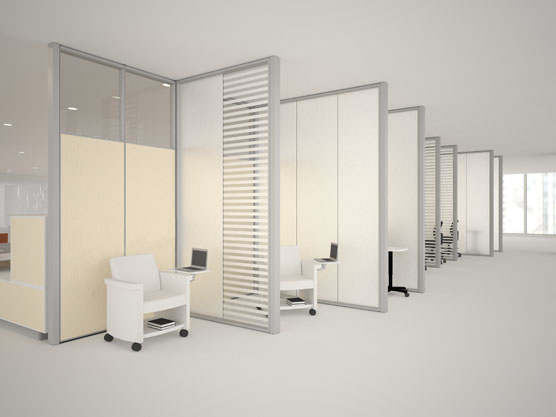 |
Today’s collaborative modern offices include areas like “quiet zones” pictured above.
Image: Teknion
Technology has allowed for business collaboration to happen just about anywhere. Improvements in technology including cloud computing, smart phones, instant messaging, and wireless internet accessibility, has a very dynamic effect on the way we work and, in turn, the way we design an interior space. A trend we are seeing in commercial interior design relates to technology and the idea of bringing people together in a virtual workplace.
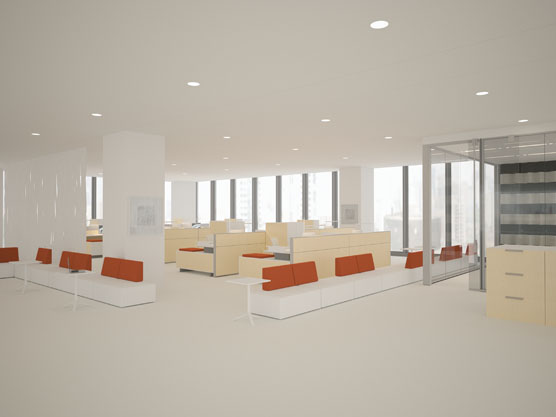 |
Interior designers are able to foster opportunities for interaction within an office setting often leading to increased productivity.
Image: Teknion
Collaboration
In a technological world, knowledge gained is knowledge shared. Office productivity is now stemming from socialization between colleagues rather than solitary work. Increasing the emphasis on collaborative spaces optimizes these opportunities for interaction. This is why, more and more often, space is being dedicated to gathering places rather than private, dedicated offices. Although weâre seeing a separation of quiet and collaborative areas, the allotted space is more heavily weighted towards collaboration.
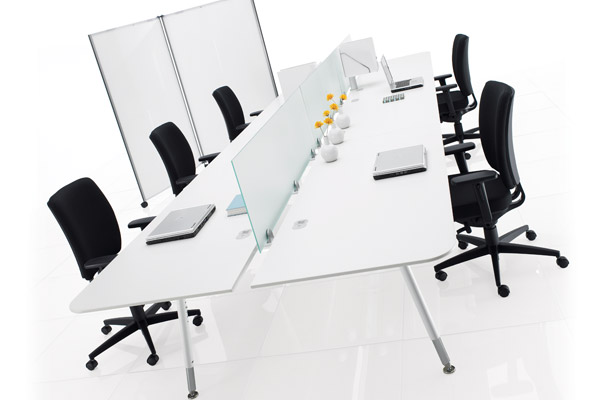 |
By introducing touchdown stations into the interior design plan, the physical space required for more mobile workers can be significantly decreased.
Image: Global
Virtual Office
Collaborative environments, created by improvement in technology, also cultivate the opportunity for a virtual office. Technological advances (smart phones, instant messaging, email, and cloud computing) allow for colleagues and clients to communicate without a permanent meeting space. This shift in communication has lead to a significant decrease in the amount of physical space required by an organization. To address this, modern office interiors often include shared touchdown spaces for individuals working in a mobile way. One hundred percent of work cannot be completed virtually, so often these shared workstations provide a part-time workplace for multiple mobile workers.
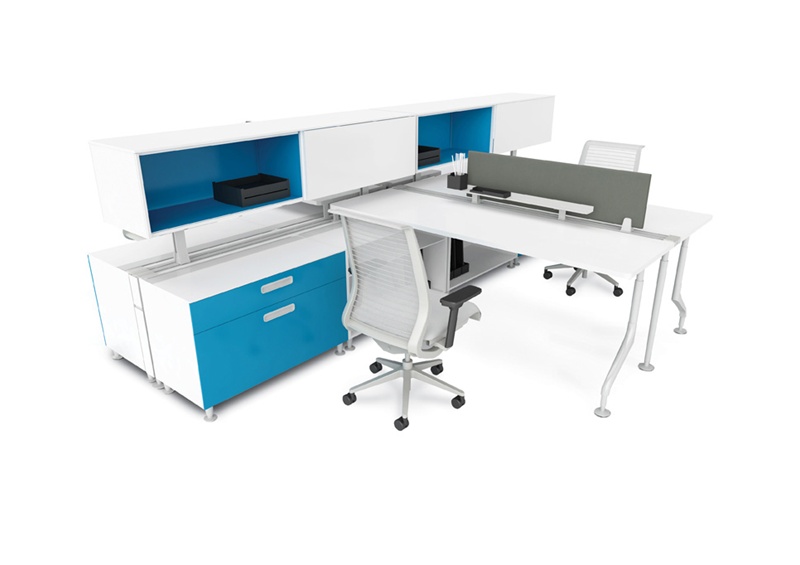 |
Technology has paved the way for a paperless, collaborative office, both reducing the spatial needs of an organization.
Image: Steelcase
Smaller Workstations
It is a fact that the typical workstation has decreased by as much as 40% since 1980. There are a number of factors leading to this decrease, but technology is among the largest factor. Technology has allowed for the advancement of the âpaperlessâ office. A reduction in paper use translates directly to a decrease in storage space required, and thus, to a decrease in the area required for work activities. A shift to collaborative work environments from private enclosed offices has also promoted this decrease in area allotted per worker.
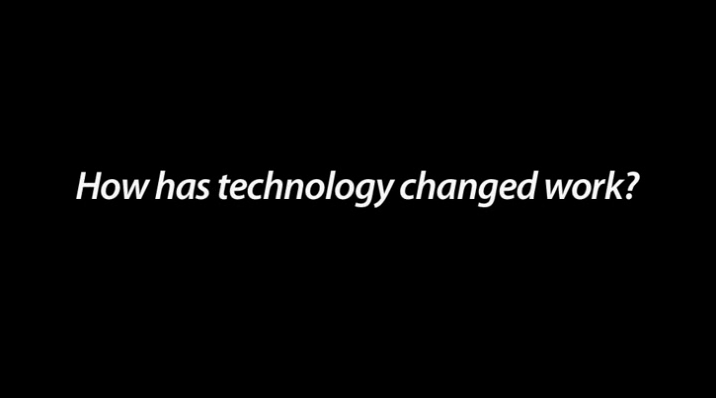 |